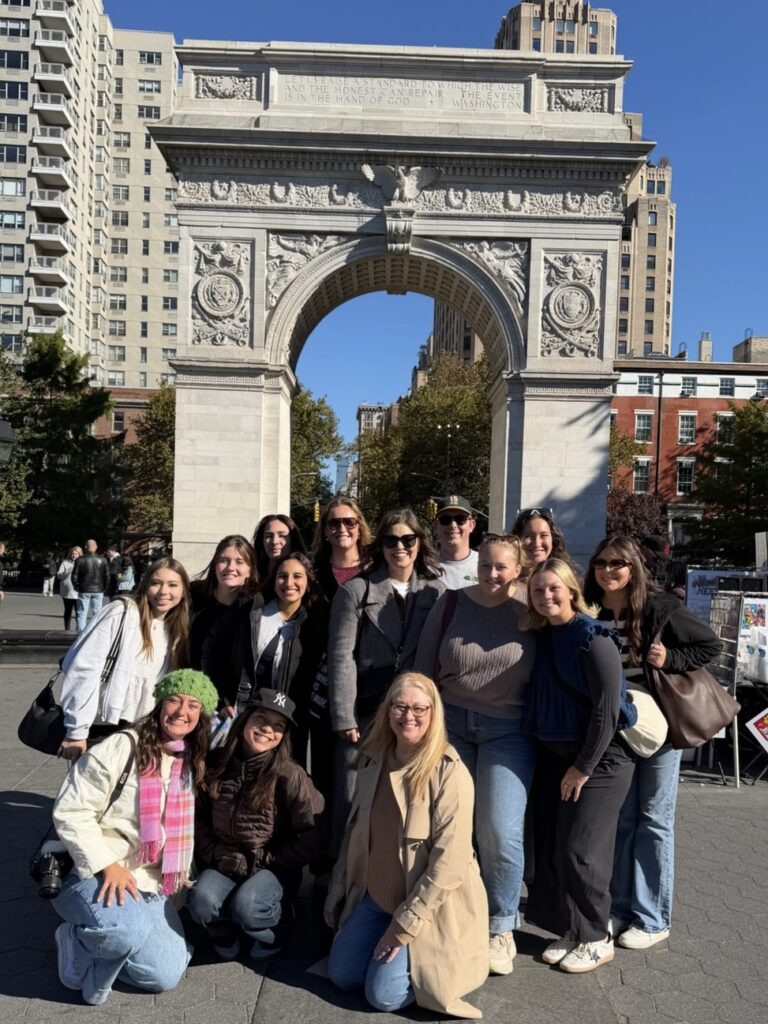Over fall break, the POL 4030: Creating Change, Claiming Power class at Point Loma Nazarene University took a trip to New York, where lessons inside the classroom came to life.
I was fortunate to be one of the 12 students on the trip and bonded with my classmates over the personal application of what we learned.
The class is led by Linda Beail, a professor of political science, and Amy Nantkes, an assistant professor of political science. It analyzes different social movements throughout American history, focusing on marginalized groups such as women, immigrants, and minorities within both contemporary and historical contexts.
The trip spanned from Oct. 23-29, and students had the opportunity to see New York City, as well as upstate New York, including Rochester and Seneca Falls.
In New York City, we saw the places where social movements began, such as the Stonewall Inn, which was a landmark for the gay rights movement, and Chinatown, where workers’ rights movements found community within the garment industry.
In upstate New York, we stood in the very spots where the fight for women’s suffrage began.
Beail said that the trip would be interdisciplinary between art, history and politics.
From seeing Broadway productions that bring the movements we learned about to musical life — like the show “Ragtime” — to seeing museum exhibits such as “The Dinner Party” by Judy Chicago, we experienced the connection between art, history, and politics firsthand.

Rebecca Thomas, a fourth-year history and education major, reflected on how the trip allowed her to understand history on a deeper level.
“As a history major, I learn thousands of random facts, dates and situations; I picture them all as little pieces of loose string,” Thomas said. “For me, the most wonderful feeling is being in a physical place and getting to tie them all together into a net or web — seeing how close different people were, connecting movements and understanding history off a page.”
Some of the places around New York that highlighted how the trip was interdisciplinary included the Girl Puzzle monument, which honors investigative journalist Nellie Bly, the Brooklyn Museum, Greenwich Village and Rochester.
Being able to have a real-life interpretation of what we had learned was eye-opening and helped me to better understand the power and context of each movement.
Emily Lindenmayer, a fourth-year political science major, said the trip also helped her connect with the movements and people we learned about.
“It’s rare to take a class where you get to stand in the spots that you learn about,” Lindenmayer said. “Having your feet touch the very ground where history happened is life changing. Each memorial, each landmark, each national monument or historical site has made a lasting impact on me and the way I see the world.”
Seeing the locations of where significant events occurred was moving. One specific moment that felt emotional was when we were told to hold on to the mahogany banister in the stairwell of a tenement building, as it would help preserve the wood — essentially meaning we were helping to preserve history. Another was placing roses on Susan B. Anthony’s grave in Rochester and seeing the “I Voted” stickers sitting proudly on top.
Beail said the trip “makes things we talk about [in class] come more alive, and students feel more personally connected to individuals and stories and places.”
For many of us, standing on the porch of suffragist Elizabeth Cady Stanton’s home was incredibly meaningful and helped us to understand the humanity of the figures we learned about.
“It was such a beautiful connection and humanization of a real powerhouse lady with real passions and real flaws,” Lindenmayer said.
Thomas also reflected on this moment and said that while Stanton was a large and influential figure, she was able to understand that she was a human first.
One of the highlights of the trip was bonding with classmates in a way that isn’t found in most classrooms. From sharing hotel rooms and houses, making and eating meals with one another, and crying together over moments we found moving, we were able to connect on a new level.
Thomas said one of her favorite parts of the trip was “creating a new community of learners and friends and getting to experience this beautiful trip with a group of people that have a wealth of knowledge and experience that brought new and exciting things to the table.”
Beail said students and teachers were able to develop closer relationships through the trip, too.
“We get to laugh together, eat together, drive together,” Beail said. “We are able to develop relationships quicker than you would usually on campus.”
I felt this immensely. Sharing meals and impactful moments with professors was extremely special and reminded me of one of the reasons I chose PLNU. It was a connection with professors that can’t be found in many other schools.
The trip was a powerful way to inspire students that change is possible, and any person and any place can be the start of something revolutionary.
“I’ve learned that creating change doesn’t have to begin with an influential figure; more often than not, it starts with the little guys gathering together and believing they are capable of making change,” Thomas said. “Claiming power is not only a personal experience, but an action that can motivate others to do the same and claim their own.”
